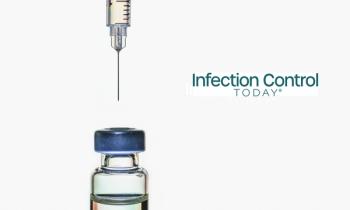
- Infection Control Today, March/April 2025 (Vol. 29 No.2)
- Volume 29
- Issue 2
Optimizing Training for Environmental Services Staff: A Critical Component of Patient Safety and Infection Control
This article explores why it is essential to train housekeeping staff and leaders in health care facilities, emphasizing key reasons and evidence-based practices to back this necessity.
Effective environmental services (EVS) are critical in maintaining a safe and healthy health care environment. Properly trained housekeeping staff are essential in preventing health care–associated infections (HAIs), ensuring compliance with regulations, and promoting patient and staff safety. Moreover, EVS leaders must possess supervisory skills and advanced knowledge of cleaning protocols to ensure high hygiene standards. This article delves into the importance of training housekeeping staff and leaders in health care facilities, highlighting key reasons and evidence-based practices to support this imperative.
Preventing HAIs
HAIs are a significant challenge in health care settings, affecting approximately 1 in 31 hospital patients on any given day in the US.1 Contaminated surfaces, equipment, and high-touch areas contribute to transmitting pathogens such as methicillin-resistant Staphylococcus aureus and Clostridioides difficile. Proper training equips housekeeping staff with the skills to clean and disinfect effectively, reducing microbial loads on surfaces and minimizing infection risks.
Key aspects of training should include the following:
- Understanding pathogen transmission: Housekeeping staff should learn how pathogens spread and which surfaces are most likely to harbor infectious agents. This includes understanding the role of high-touch areas, such as doorknobs, light switches, and handrails, in transmitting bacteria and viruses. Recognizing these hot spots helps prioritize cleaning efforts and reduce the risk of infections spreading within the facility.
- Proper use of cleaning agents: Training should emphasize the appropriate selection, dilution, and application of disinfectants, ensuring compliance with manufacturers’ guidelines. Misusing cleaning agents, such as overdiluting or mixing incompatible products, can reduce their effectiveness and cause harm. Staff should be trained to identify the correct cleaning agent for each surface and follow best practices for safe and effective use.
- Personal protective equipment: Staff must understand how to use personal protective equipment (PPE) to protect themselves and prevent cross-contamination properly. This includes selecting the appropriate PPE, such as gloves, masks, and gowns, for the task at hand and knowing how to don, doff, and dispose of it safely. Proper PPE usage minimizes exposure to harmful pathogens and ensures a safer environment for staff and facility occupants.
- Evidence suggests that enhanced cleaning protocols and staff education significantly reduce the incidence of HAIs. For example, findings from a study by Kundrapu et al from 2012 demonstrated that cleaning techniques can reduce C difficile contamination in health care environments by more than 85%.2
Enhancing Patient and Staff Safety
Inadequate cleaning and disinfection can lead to unsafe environments, putting patients, staff, and visitors at risk. Training ensures that EVS staff are well-versed in the following:
- Cleaning procedures for specific areas: Critical zones such as operating rooms, intensive care units, and isolation rooms require specialized cleaning protocols.
- Waste management: Proper medical waste disposal prevents exposure to biohazards and sharp objects, reducing injury and infection risks.
- Slip and fall prevention: Training on safe mopping techniques and floor signage reduces the likelihood of accidents.
Effective training prevents accidents and infections and fosters a culture of accountability and professionalism. Well-trained housekeeping staff can promptly identify and address potential hazards, contributing to a safer health care environment.
Regulatory Compliance and Accreditation
Health care facilities must comply with stringent regulations set by organizations such as the CDC, the Occupational Safety and Health Administration (OSHA), and The Joint Commission. Noncompliance can result in penalties, legal liabilities, and loss of accreditation.
Key areas of compliance include the following:
- Standard precautions: Implement evidence-based protocols for hand hygiene and use PPE.
- Documentation: Ensure the meticulous maintenance of comprehensive records about sanitation schedules, procedural protocols, and incident documentation essential for compliance and quality assurance in health care settings.
- Audit preparation: Implement comprehensive training programs for personnel to effectively prepare for and respond to evaluations conducted by regulatory agencies.
Role of EVS Leaders
EVS leaders play a pivotal role in ensuring the effectiveness of EVS teams. Properly trained leaders provide effective oversight, motivation, and guidance to their teams, fostering a culture of excellence. Research by Hashim Zaman and Karim Lakhani from Harvard Business School in Boston, Massachusetts, found that managers sometimes sabotage talented employees to protect their own job security. Troubling results from a survey in this exploration revealed that 71% of executives had observed instances of top-down sabotage during their careers. Notably, 5% of the same respondents acknowledged engaging in actions that undermined their direct reports at some point in their professional tenure.3
It is wise to determine what information to share when providing valuable insights to subordinates or selecting new leaders for the team. To paraphrase the biblical saying, avoid giving what is sacred to those who will not appreciate it or sharing treasures with those who may disregard or misuse them, potentially causing harm in return (Matthew 7:6). This exhortation, however, should not be misconstrued as an implication that subordinates or others are inherently unworthy of receiving critical information for professional growth. Instead, it underscores the principle that empowering individuals who lack the requisite values or competence may hinder the achievement of desired outcomes, irrespective of the quality of the information imparted. This also applies to appointing the wrong leaders to positions of authority, which can stifle growth and harm the organization’s vitality.
It is imperative to advocate for leadership that prioritizes transparency, fosters professional development, and embraces the recruitment of skilled talent. Key competencies for EVS leaders include the following:
- Supervisory skills: Effective leaders must know how to delegate tasks, resolve conflicts, and evaluate performance. Leadership training enhances their ability to motivate staff and ensure accountability. The lack of leadership skills is detrimental to the team and undermines the quality of patient care, inhibiting team members’ continuous learning and development.
- Knowledge of cleaning methods: A comprehensive understanding of cleaning chemistries and industry standards is essential for effectively engaging with subordinates and sales representatives.
- Continuous education: To maintain high standards, it is essential to stay updated on emerging pathogens, cleaning technologies, and regulatory changes. Certifications from esteemed agencies that assess and enhance competencies are instrumental in equipping leaders and their teams to perform their responsibilities reliably.
For instance, findings from a study by Carling et al from 2008 highlighted that supervisory programs focusing on cleaning efficacy significantly improved surface disinfection, reducing HAIs.4
The Economic Impact of Proper Training
Investing in housekeeping training yields substantial economic benefits for health care facilities. HAIs result in significant costs, averaging $25,000 to $40,000 per infection in direct medical expenses.5 Effective training reduces these costs by preventing infections and minimizing hospital readmissions. Moreover, trained staff improve operational efficiency, reducing turnover rates and the need for corrective actions.
Following are specialized trainings in cleaning and disinfection protocols as well as infection prevention and control practices available from several organizations:
1 Certified Health Care Environmental Services Professional (CHESP)
Offered by the American Hospital Association
Focuses on infection control, cleaning protocols, waste management, and patient safety
2 Certificate of Mastery in Infection Prevention (CMIP)
Offered by the Association for the Health Care Environment
Covers health care–specific cleaning practices, disinfection, epidemiology, microbiology, and regulatory issues
3 OSHA training
Offers courses in workplace safety, blood-borne pathogens, and hazard communication
4 Cleaning Industry Management Standard (CIMS)
Offered by the International Sanitary Supply Association
Focuses on management standards for cleaning applicable to health care facilities
5 Infection prevention and control training
Offered by organizations such as the CDC or the World Health Organization
Focuses on hygiene practices, infection control, and disinfection protocols specific to hospitals
Developing a robust training program involves the following:
- Initial orientation: New employees should receive comprehensive training on cleaning protocols, safety procedures, and organizational policies.
- Ongoing education: Regular competency assessments keep staff updated on best practices.
- Tailored modules: Training should address specific needs, such as handling biohazards or cleaning isolation rooms.
- Feedback mechanisms: Encouraging feedback from staff helps identify gaps in training and opportunities for improvement.
Conclusion
Properly training housekeeping staff and ESV leaders is vital for maintaining a safe, compliant, and efficient health care environment. Training reduces the risk of HAIs, enhances safety, ensures regulatory compliance, and fosters a culture of excellence. Health care organizations must prioritize comprehensive training programs and continuous education to achieve these goals. Investing in the professional development of housekeeping teams protects patients and staff and delivers significant economic and reputational benefits.
References
- Magill SS, O’Leary E, Janelle SJ, et al; Emerging Infections Program Hospital Prevalence Survey Team. Changes in prevalence of health care-associated infections in U.S. hospitals. N Engl J Med. 2018;379(18):1732-1744. doi:10.1056/NEJMoa1801550
- Kundrapu S, Sunkesula V, Jury LA, Sitzlar BM, Donskey CJ. Daily disinfection of high-touch surfaces in isolation rooms to reduce contamination of healthcare workers’ hands. Infect Control Hosp Epidemiol. 2012;33(10):1039-1042. doi:10.1086/667730
- Blanding M. What drives managers to sabotage talented employees. Harvard Business School. January 9, 2025. Accessed January 18, 2025. https://www.library.hbs.edu/working-knowledge/what-drives-managers-to-sabotage-talented-employees
- Carling PC, Parry MF, Von Beheren SM; Healthcare Environmental Hygiene Study Group. Identifying opportunities to enhance environmental cleaning in 23 acute care hospitals. Infect Control Hosp Epidemiol. 2008;29(1):1-7. doi:10.1086/524329
- Zimlichman E, Henderson D, Tamir O, et al. Health care-associated infections: a meta-analysis of costs and financial impact on the US health care system. JAMA Intern Med. 2013;173(22):2039-2046. doi:10.1001/jamainternmed.2013.9763
Articles in this issue
Newsletter
Stay prepared and protected with Infection Control Today's newsletter, delivering essential updates, best practices, and expert insights for infection preventionists.






